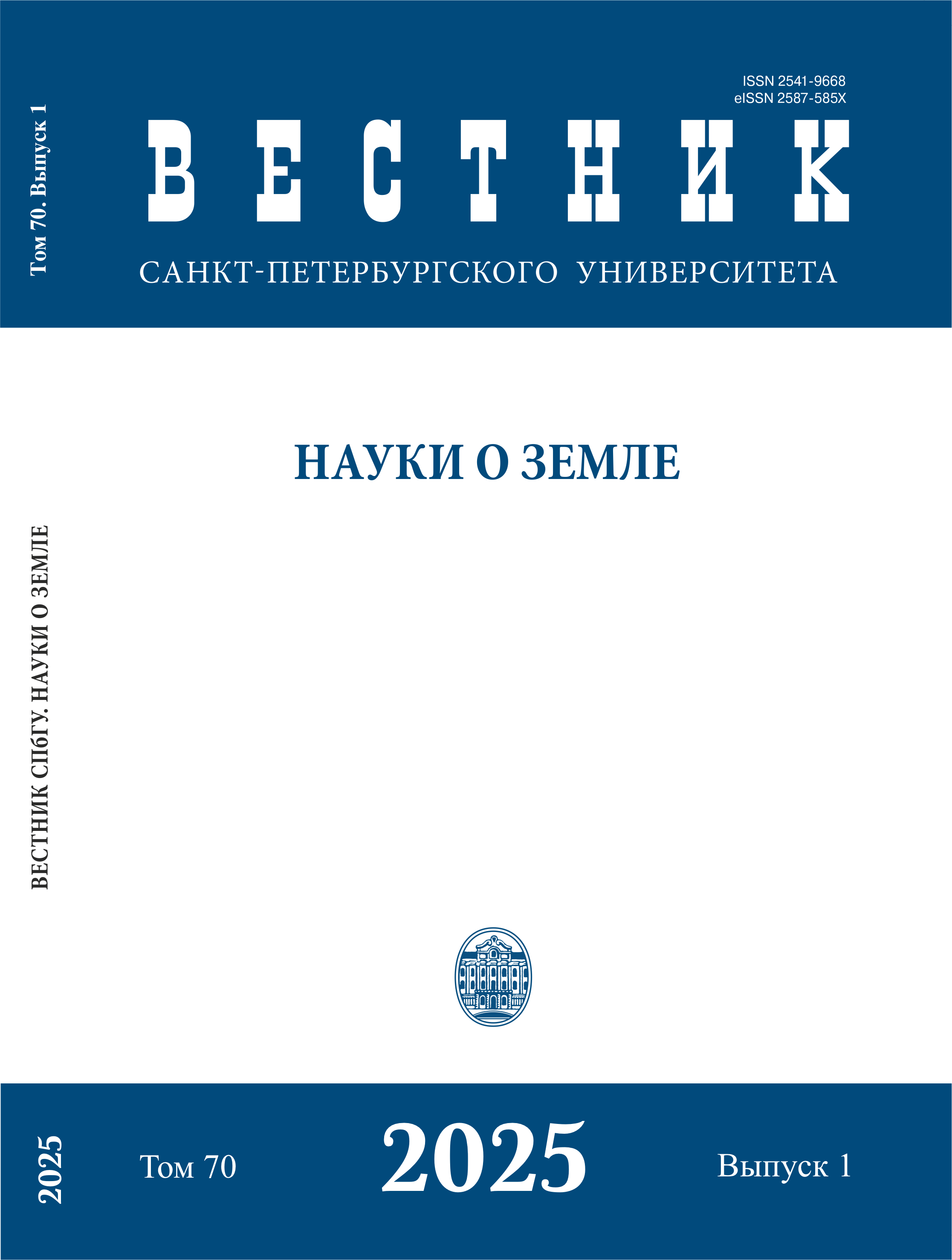Anthropogenic activity in prehistory as seen from archaeological and palaeoenvironmental data in the south-eastern Baltic on the background of the Holocene climate
DOI:
https://doi.org/10.21638/spbu07.2025.104Abstract
An overview of the archaeological and palaeoenvironmental data from the south-eastern Baltic (Kaliningrad region) is presented on the background of the Holocene climate description. Information on natural palaeoarchives (lakes Kamyshovoe and Chistoe, as well as bogs Kozje, Velikoe, Zelau) combined with archaeological materials from prehistoric sites provides a picture of ancient anthropogenic activity and main stages of evolution of local communities starting from the Mesolithic. Modern Analog Technique (MAT) method applied for the Kamyshovoe lake palynological data is used to reconstruct the seasonal temperature and precipitation trends and values during the Holocene in the south-eastern Baltic and to provide a background to ancient human activity. During the Mesolithic, climate conditions changed from those close to the late Glacial through a period of warmer and wetter climate with parameters close to the present day to conditions of climatic optimum, when temperature was several degrees higher that modern ones. Archaeological material testifies that the subsistence strategies of that time were based on fishing, fowling and hunting along with active exploration of forest plant resources, though due to scarcity of data, tracing changes in human activities corresponding to dynamic of climate and palaeoenvironment is difficult. While the first part of the Neolithic fell during the Holocene climatic optimum, from about 5500 cal yr BP the climate changed towards colder temperatures and a shift in seasonal moisture content: summers became wetter and winters less snowy. Farming (cattle breeding and plant cultivation) started to play a role in the subsistence strategy of the local Neolithic population, gaining more importance during the Bronze Age, a period with relative temperature stability but significant precipitation fluctuations. Since the start of the Iron Age (2800 cal yr BP), intensity of anthropogenic activity (farming and metallurgy) in the south-eastern Baltics grew with some interruptions during the Migration period (5-6th centurues AD) and the Teutonic Order's conquest of the area in the 13-14th centuries AD. Since the Iron Age, temperatures remain close to modern ones. Several “wetter” episods are distinguished coinciding with the Roman Time, Migration Period and the Little Ice Age during the Medieval Period.
Keywords:
anthropogenic activity, archaeology, prehistory, palaeoclimate, south-eastern Baltic, Modern Analog Technique method
Downloads
Downloads
Published
How to Cite
Issue
Section
License
Articles of "Vestnik of Saint Petersburg University. Earth Sciences" are open access distributed under the terms of the License Agreement with Saint Petersburg State University, which permits to the authors unrestricted distribution and self-archiving free of charge.






